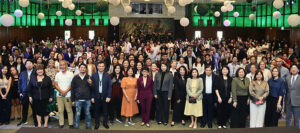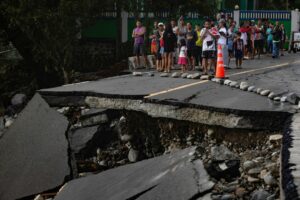(Part 5)
Instead of focusing immediately on potential “star” industries in the formulation of an industrial policy, it is wiser to identify those economic sectors which are conditio sine qua non for the growth of other industries.
For example, it is a no brainer that the hospitality industry (tourism) has tremendous growth potentials in the Philippines. The country is well known as the best beach destination in the world. Palawan has been rated by international tourism bodies as “the best island resort” in the world. The widespread use of English and the generally pleasant disposition of the Filipino are also positive factors for attracting foreign tourists to the archipelago.
The large inflow of foreign tourists to some of our ASEAN neighbors like Thailand, Vietnam, or Malaysia (with tourist arrivals recently numbering 15 to 30 million, compared to our less than 10 million) is evidence that the market demand is there. The harsh fact that the Philippines is struggling to go beyond 10 million foreign tourists annually can only be attributed to the severe lack of modern infrastructure such as world class international airports, railways, subways, etc., as exist not only in the four Tigers but also in our peer countries like Vietnam, Thailand, and Malayia.
That is why an industrial policy must give the highest importance to the building of infrastructure, especially in the countryside. There should be no letup in investing 6% of the GDP annually in infrastructure building which, in turn, will need a serious re-orientation of tertiary education towards the technical training of construction workers. Needless to say, the primordial importance of efficient and abundant infrastructure should be greater reason to aggressively pursue the present efforts to rid our government of corrupt legislators, Department of Public Works and Highways (DPWH) officials, and dishonest private contractors (going all the way to sending them to jail if convicted).
INFRASTRUCTURE DEVELOPMENTFrom our review of the policy mistakes in the past that led to high rates of poverty, we saw that one of the major ones was that of limiting foreign equity in major capital-intensive investments to 40%. We may consider it providential that this policy error was corrected during the Duterte Administration when there was legislation that redefined public utilities to exclude major infrastructure like airports, railways, and subways. Thus, without amending the Constitution, this obstacle to attracting much-needed foreign direct investments (FDIs), has been removed.
Unfortunately, however, FDIs are not yet pouring in, as they are in Vietnam, because of regulatory complexity, red tape, and policy uncertainty. There continue to be delays in permits, layers of bureaucracy, and inconsistent requirements across jurisdictions (national vs local) which make it hard for investors to plan or estimate costs/time. There are frequent regulatory changes or unclear interpretation of existing laws which add to risk. Investors prefer stable, predictable regulatory regimes.
As we saw above in the case of the tourism sector not being able to achieve its full potential, FDIs continue to be low because of the high costs of infrastructure and outright deficiencies. Energy costs continue to be highest in the region. There are transport bottlenecks resulting from congestion in cities, slow or inefficient port operations, and weak logistical connections. There are serious gaps in digital infrastructure/ICT connectivity, especially in remote areas.
As regards human resources, there is a lack of sufficiently skilled or specialized workers in certain high-tech or advanced industries. This limits sectors that require technical labor or R&D.
As the whole nation recently experienced during the flood control corruption cases involving top legislators and officers of DPWH, non-transparent government processes increase transaction costs and risk perceptions. To make matters worse, other countries in the ASEAN (Vietnam, Thailand, and Indonesia) are getting more reforms going, improving incentives, and lowering entry barriers. The Philippines is perceived to be lagging in reducing costs of doing business, especially those tied to utilities, logistics, permitting, and import-export procedures.
IT-BPM INDUSTRYAssuming that there will be serious efforts to address these obstacles to both foreign and domestic investments, can we with some reasonable amount of confidence, identify some of the “star” industries in which the Philippines attain above-average growth given both domestic and global developments?
The first on my list is the IT-BPM industry. It may be too late in the day for us to be a major exporter of manufactured products, but we can still aspire to be one of the leading exporters of services that cater to the industrial sector. The IT-BPM industry is clearly one in which we can aspire to be a global leader, with India as a close competitor.
As recently announced by Jack Madrid, President and CEO of the IT-BPM Association of the Philippines, despite the expected slowdown of the global economy resulting from the tariff wars being waged today, his sector is quite bullish in its growth expectation, with a projection of $42 billion in export revenues and increase in headcount to 1.97 million workers in 2026 (see BusinessWorld, Sept. 24).
Our competitive advantage in the IT-BPM sector still lies in the core segments of banking, financial services, and healthcare. For some time now, close to 60% of the earnings of the IT-BPM sector are accounted for by call centers. Considering that this segment is the most vulnerable to being replaced by Artificial Intelligence, it is providential that global capability centers (GCCs) have been growing faster in recent years than contact centers.
GCCs are offshore units established by multinational corporations to provide specialized services such as finance, IT and customer support to their global operations. There has been increased interest in GCCs in the Philippines from prospective clients in the US, Australia, and Europe. The recent move of the Trump Administration to impose a $100,000 “tax-like charge” on H-1B visas for foreign (highly skilled) workers could actually accelerate the move of US firms to put up more GCCs in the Philippines.
As Mr. Madrid recently reported, globally GCCs are reshaping the IT-BPM industry, with its market expected to grow to $155 billion by 2027. To date, there are 170 GCCs in the Philippines, growing by around 10 each year. It is important that the IT-BPM industry implement “enterprise-based” learning, in cooperation with universities and technical schools, to upskill, reskill and retool the hundreds of thousands of contact center workers so that they can shift from their call center services to higher-value knowledge-intensive work that will be in great demand in these GCCs.
Fortunately, despite all the handwringing about the poor quality of our tertiary education, it is my experience as a long-time educator and mentor that a large number of our college graduates, given the right and adequate attention by cooperating business enterprises, can improve their skills and acquire new skills to take on higher-value jobs. One only has to examine the success stories of such private educational institutions as the PHINMA schools, the National University, and Far Eastern University, among others. Private universities have been more successful in producing job-ready graduates with the appropriate skills demanded by industry than the majority of state colleges and universities, whose growth should be controlled. If the Government has more resources for education, the focus should be to improve the quality of basic education, from K to 12.
This sector of the Philippine economy has grown by leaps and bounds with little help from Government. IT-BPM officials, however, are requesting a little assistance from Government through a law that is similar to the Regional Operating Headquarters (ROHQ) law which provides incentives to multinational companies establishing ROHQs and area headquarters in the Philippines. Under the law, companies that do not derive income from the country are not subject to income tax, while ROHQs and area headquarters are exempt from value-added tax, local taxes, and import tax on training materials, equipment, and motor vehicles.
(To be continued.)
Bernardo M. Villegas has a Ph.D. in Economics from Harvard, is professor emeritus at the University of Asia and the Pacific, and a visiting professor at the IESE Business School in Barcelona, Spain. He was a member of the 1986 Constitutional Commission.






